Advertisements
Advertisements
Question
In the following figure, AB is parallel to CD; find the values of angles x, y and z:
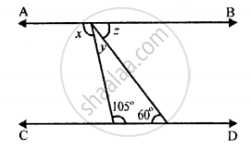
Solution
In the given figure,
AB || CD
and LM is its transversal
∴ ∠ALM = ∠LMN (Alternate angles)
⇒ ∠x = 105°
∴ x = 105°
Similarly AB || CD and LN is its transversal
∴ ∠BLN = ∠LNM (Alternate angles)
∴ ∠z = 60°
∴ z = 60°
But x + y + z = 180° (Straight line angles)
⇒ 105° + y + 60° = 180°
⇒ y + 165° = 180°
⇒ y = 180° - 165° = 15°
Hence x = 105°, y = 15° and z = 60°
APPEARS IN
RELATED QUESTIONS
The adjoining figure shows two straight lines AB and CD intersecting at point P. If ∠BPC = 4x – 5° and ∠APD = 3x + 15°; find:

(i) the value of x.
(ii) ∠APD
(iii) ∠BPD
(iv) ∠BPC
In your note-book copy the following angle using ruler and a pair compass only.
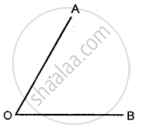
In your note-book copy the following angle using ruler and a pair compass only.
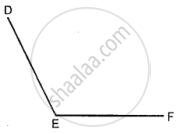
In your note-book copy the following angle using ruler and a pair compass only.
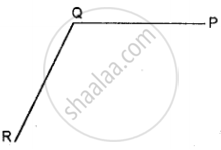
Draw a line segment PQ = 8cm. Construct the perpendicular bisector of the line segment PQ. Let the perpendicular bisector drawn meet PQ at point R. Measure the lengths of PR and QR. Is PR = QR?
Draw a line segment AB = 7cm. Mark a point Pon AB such that AP=3 cm. Draw perpendicular on to AB at point P.
Draw a line segment OA = 5 cm. Use set-square to construct angle AOB = 60°, such that OB = 3 cm. Join A and B; then measure the length of AB.
In the following figures, PQ is parallel to RS. Find the angles a, b and c:
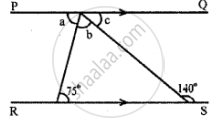
Draw a line AB = 9 cm. Mark a point P in AB such that AP=5 cm. Through P draw (using set-square) perpendicular PQ = 3 cm. Measure BQ.
Draw a line segment AB = 6 cm. Without using set squares, draw angle OAB = 60° and angle OBA = 90°. Measure angle AOB and write this measurement.
